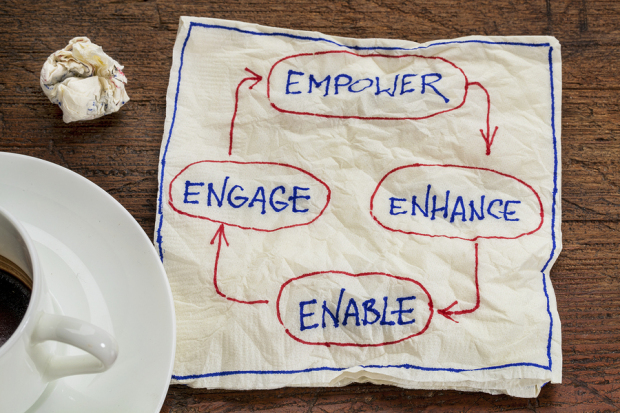
Disengaged employees cost the U.S. $450 billion to $550 billion a year in lost productivity. These employees are more likely to steal from their companies, negatively influence their coworkers, miss workdays, and drive customers away. Sounds like a lot, right?
The way that companies engage their employees must evolve with the times (and the generations) in order to keep employees happy and productive. In my opinion, practices recommended by employee engagement experts, such as Gallup, are way too generic – and kind of old school – to really solve employee engagement issues. Many companies are wising up to that and new companies with new ideas are emerging in the marketplace.
I was recently introduced to the concept of “gamification”. When I first heard this word, I thought it sounded incredibly tacky and kind of juvenile – more of an idea of treating employees like school children instead of functioning adults. However, it is actually a concept that encourages companies to treat their employees like a game treats its players.
A company called Badgeville has developed a platform that puts gamification into action. The platform is obviously a little pricey, but the principle of it can be translated into any company culture. Here are a few principles to consider when you’re evaluating your current state of employee engagement:
4 Pillars of Employee Engagement
Encourage competition. Even though you’re not running a sales-oriented organization, encouraging healthy competition among your employees is totally healthy and incredibly effective. Create a leaderboard, either digital or printed, that can be seen by everyone in the organization and keep track of how many volunteers each employee recruits, how many fundraising dollars they can bring in, or even how many donor thank you letters they write. Incentives always make it more exciting, but can be something simple like coffee with the founder, first dibs on the new shipment of office supplies, or a personal profile to be shared with the entire organization.
Reward good work. Taking it all the way back to Mario Brothers, when Mario knocked into the brick box that had a mushroom in it, he grew into a bigger character. This was a reward for finding this treasured item. Take that mentality and apply it to your team. If someone does something that’s innovative, reward him or her. Don’t make this an incentive, but a genuine gesture when things go well. And when it makes sense, be sure to compensate them for their good work. While many don’t join the nonprofit industry for money, raises – even small ones – are always a great way to keep employees happy.
Recognize milestones (and properly compensate them). If an employee reaches a milestone, make sure they’re adequately compensated for that effort. Reached a year of service? Here’s an extra day of vacation. You put in 60 hours and it’s only Thursday? Take a half day tomorrow. You launched that new fundraising campaign and it’s already pulled in more than three campaigns combined from last year? I’d like to give you a raise.
Encourage, incentivize, and help to develop the next step. I find in corporations, the next step is not always clear for those of us who don’t really see our next step as managing others. Traditional working structures are slowly fading and the idea that senior management needs to have time on their side rather than great, effective ideas is becoming a thing of the past (example: Facebook being launched and lead by a then-college student). Don’t pigeon hole your employees into a “climbing the corporate ladder” way of working. If they’ve found the cheat code, let them skip to the next level.
This article expands a little bit on the gamification concept. Are you using any gamification techniques at your organization? How is it working?

